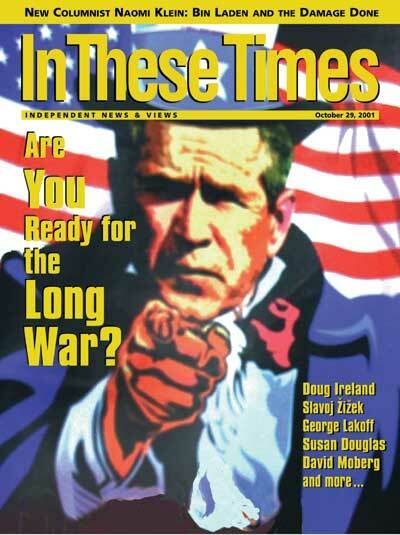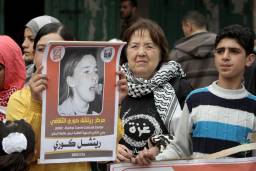It seemed impossible. Within a week of the most devastating foreign attack on the U.S. mainland in its historya day when thousands died and virtually everyone in the country began worrying about their own physical safety and that of their loved onespeople were in the streets, demanding peace. Lots of people: thousands in New York, San Francisco, Boston, Portland and Seattle. Smaller but equally determined crowds sprang up in cities and towns across the country. By September 2211 days after the attackone student coalition had pulled together a day of events on 155 campuses nationwide. Was this the peace movement? The same folks who sleepwalked through NATO’s U.S.-led bombing of Yugoslavia only two years ago? Well, no. Few ventured then into the moral quagmire of an apparent U.S. attempt at “humanitarian intervention.” It was a confusing issue, but more importantly, it was one ordinary people didn’t have to care about.
Everyone, however, cared about September 11and had an opinion about what the government should do. At first, the dominant sensethe only sense, to hear our TV networkswas to go kick some A-rab ass. But within days, more and more people started asking significant questions about the effectiveness of George Bush’s proposed War on Terrorism. Questions like: How can the war be fought? Who is the enemy? Where is the enemy? How can we achieve victory? How will we know when we’ve achieved it? Is this the best way to prevent future terrorism? Will we create more terrorists than we eliminate?
Those are not simply pacifist questions; they’re common-sense questions that transcend ideology, and so the crowds have grown from the pacifist and progressive core, through faith-based communities and into the mainstream. An international Gallup poll released on September 21 showed overwhelming public opposition in 29 of 31 countries to a U.S. military response. Majorities of up to 80 to 90 percent in Europe and Latin America favored extradition and trial of those responsible, not armed force. The only countries where military response was favored were Israel (77 percent) and the United Stateswith only 54 percent. A week after unimaginable loss of civilian life, nearly half of the American public had serious doubts about our proposed war.
Very little of this appeared in national media until the White House and Pentagon finally acknowledged some of the same concerns. As a result, Americans have now been cautioned not to expect a massive land invasion. That comes as an enormous relief to the new anti-war movement, which has been motivated in large part by fears that what Bush and his circle of hawks had been proposing would not only be ineffective, but could rapidly become World War III.
The new movement’s challenge is to call for the United States and its allies to pursue a reasoned, effective strategy, without its demands sounding like apologies for terrorism. That will require tact, clarity and understanding. It requires saying not just what activists want to say, but what that 46 percent, and others, need to hear. It requires not just a litany of past U.S. foreign policy sins, but explaining how non-military options can stop terrorism better: improved security without stripping civil liberties; improved policing and intelligence without abusive covert programs; and attacking the motivations of young, poor, devout, desperate terroristsin other words, challenging policies by which the West promotes poverty, dictatorships and violence in the Islamic world.
September 11 impacted American life in so many ways that the activist temptation is to incorporate everyone’s pet issues, because they’re all affected. But this movement needs focus and coordination for the many people who spontaneously came out into the streets so quickly. All agree that the War on Terrorism won’t go away soon. That gives anti-war activists time to organize, and to insist that terrorism be prevented more effectivelywithout war. The sooner military deployments end, the better our future. The race is on.







